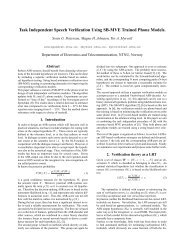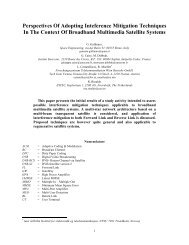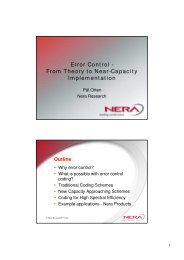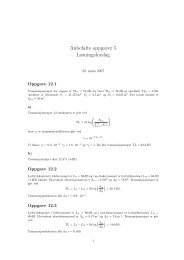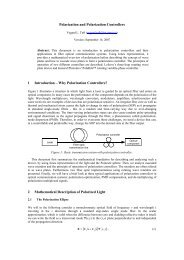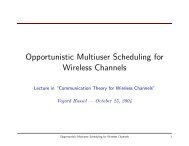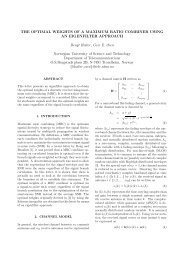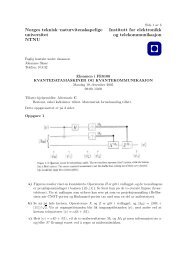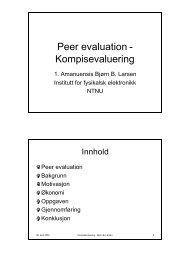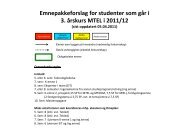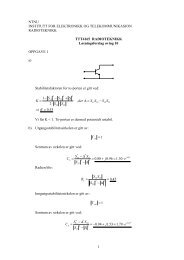Lab 4 Laser - Institutt for elektronikk og telekommunikasjon - NTNU
Lab 4 Laser - Institutt for elektronikk og telekommunikasjon - NTNU
Lab 4 Laser - Institutt for elektronikk og telekommunikasjon - NTNU
You also want an ePaper? Increase the reach of your titles
YUMPU automatically turns print PDFs into web optimized ePapers that Google loves.
1.2 <strong>Laser</strong> fundamentals 9<br />
quencies of an optical resonator<br />
near m = 1 million. For an L = 30 cm resonator, the spacing between successive<br />
resonance frequencies is f fsr = c/2L = 500 MHz while the resonance<br />
frequencies are near f m = c/l = 500 THz, one million times larger.<br />
The spectrum, or collection of different frequencies, emitted by a laser is<br />
a combination of the resonant frequencies f m of the many possible standing<br />
optical waves in the resonator (fig. 1.2a) with the range of frequencies in the gain<br />
spectrum (fig. 1.2b) produced by stimulated emission and population inversion.<br />
A representative laser output spectrum is shown in Fig. 1.2c. Modified laser<br />
resonators can suppress all but one of the resonant frequencies, permitting more<br />
precise control of the frequency, a desirable feature in scientific and engineering<br />
applications. The typical He-Ne laser illustrated in Fig. 1.3 consists of a sealed<br />
tube containing a mixture of helium and neon gasses and an optical resonator.<br />
An electrical discharge in the tube excites the helium atoms, which then collide<br />
with the neon atoms, transferring excess energy to pump the neon atoms from<br />
level 0 to level 2. The neon atoms develop a population inversion between<br />
levels 2 and 1, providing gain at one of several different visible and infrared<br />
wavelengths. The light circulating between the two mirrors is amplified by<br />
the stimulated emission from the excited neon atoms on each round trip. One<br />
mirror, called the back reflector, has high reflectivity(> 99%) while the other<br />
mirror, called the output coupler, has lower reflectivity (typically 95 − 98%)<br />
and transmits a fraction (2 − 5%) of the light to the outside this is the laser<br />
output that we observe. The power inside the laser is many (20 − 50) times<br />
higher than the power emitted.<br />
Figure 1.3: Construction of HeNe laser tube



